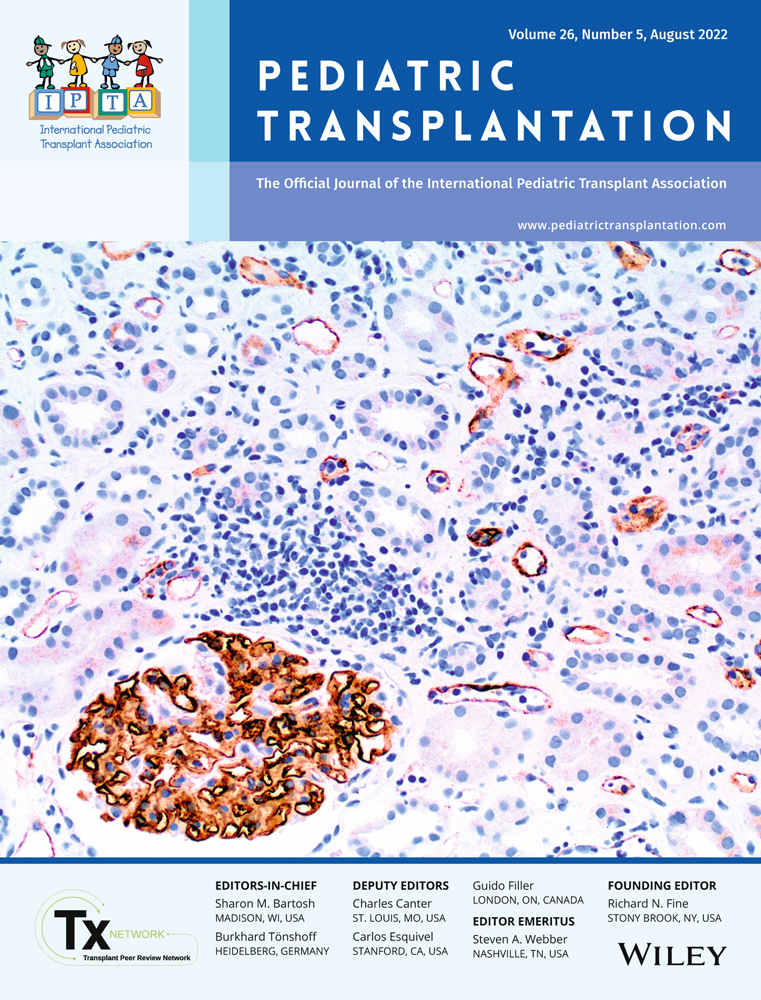Predictors of portal vein complications after pediatric liver transplantation: A German center experience
Funding information
The first author was funded by a full scholarship from the Ministry of Higher Education of the Arab Republic of Egypt
Abstract
Background
Portal vein complications (PVCs) after pediatric liver transplantation (LT) are sometimes asymptomatic, especially in the early phase, and can threaten both the graft and patient's survival. Therefore, the purpose of this study is to analyze the risk factors for portal vein thrombosis (PVT) and portal vein stenosis (PVS) after pediatric LT.
Methods
All pediatric patients (n = 115) who underwent primary LT at Regensburg University Hospital between January 2010 and April 2017 were included in this study. The pre-, intra-, and postoperative parameters of all patients were retrospectively reviewed and risk factors for both PVT and PVS were analyzed.
Results
Of the 115 patients, living donor LT was performed on 57 (49.5%) patients, and biliary atresia was the primary diagnosis in 65 patients (56%). After pediatric LT, 9% of patients developed PVT, and 16.5% developed PVS. Patient weight ≤7 kg [odds ratio (OR) 9.35, 95% confidence interval (CI) 1.03–84.9, p = .04] and GRWR >3% (OR 15.4, 95% CI 1.98–129.5, p = .01) were the independent risk factors for the development of PVT and PVS, respectively upon multivariate analysis. The overall patient survival rates at 1, 3, and 5 years were 91%, 90%, and 89%, respectively, and there was no difference in patient survival among those with and without PVCs.
Conclusions
Pediatric patients with body weight <7 kg and/or receiving a graft with GRWR >3% may develop PVCs and so require certain surgical modifications, close follow-up, and prophylactic anticoagulant therapy following transplant.
CONFLICTS OF INTEREST
The authors of this manuscript have no conflicts of interest to disclose.
Open Research
DATA AVAILABILITY STATEMENT
The data that support the findings of this study are available from the corresponding author on reasonable request.




